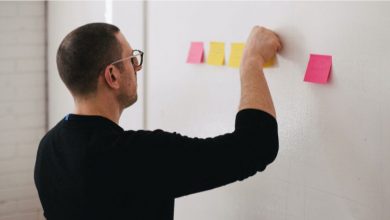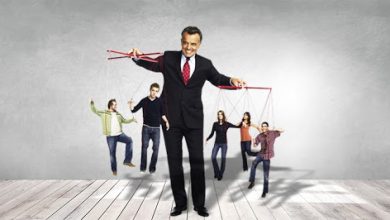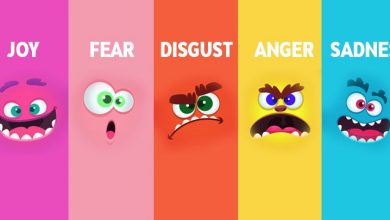Reflected Best Self Exercise
This is an exercise created from research at the Center for Positive Organizations at the Ross School of Business at the University of Michigan where an individual learns more about their strengths by asking other people to tell stories about them at their best.

Why did I choose this tool?
Some of my friends who have done this exercise at the University of Michigan school have said how this has changed their life. I believe one part of understanding our identity is understanding the things that we do well and how other people identify us. For example, I don’t normally describe myself as a computer programmer, yet when I ask other people, they’re grateful that I can help them with their computer problems and am one of the first people they call. The identity of computer programmer is not something I ascribe to myself often, but identities can be both self-ascribed and other-ascribed, and I think we often don’t recognize the importance of how other people identify us—this exercise helps us with that.
How does this apply to being a trainer?
As a trainer, we’re often on a team, and knowing our strengths can allow us to live into them, being more confident in who we are and balancing the team better. This knowledge can help us create workshops that more closely align with our strengths, while giving roles to other trainers who can complement our strengths. The exercise can help us individually get feedback on how others perceive us positively, and it can also help us practice writing best self descriptions of ourselves, other trainers, and participants. It can help us to see that everyone has different identities and those identities can work together to create something very strong.
Content
Background of the Reflected Best Self Exercise (RBSE)
The Reflected Best Self Exercise is a tool developed by Jane Dutton, Robert E. Quinn, and Gretchen Spreitzer at the University of Michigan and Laura Morgan Roberts at the Harvard Business School.
Structure of RBSE
The RBSE has four steps:
Step 1: Identify Respondents and Ask for Feedback
Compile a list of 10-20 people you want to give feedback on your strengths, trying to select people from your life that have seen you in a wide variety of contexts. Give them an introduction on what the RSBE is and then ask them to describe your strengths, how you have added value to their lives, and to use specific stories/examples to explain.
Step 2: Recognize Patterns
Collect the stories you received from other people and put them into a table with three columns: common theme, examples given, and possible interpretation. Using both what they said and your own perspective, try to distill what they said into the categories.
Step 3: Compose Your Self-Portrait
Using the insights from the previous step, write a two- to four-paragraph narrative description of your best self. Don’t just use bullet points, instead write it in prose, starting with “When I am at my best, I…”
Step 4: Redesign Your Job
Rewrite your job (trainer) description to take these strengths into consideration.
The research supporting the RSBE (as taken from the RSBE website)
- Best Self Portraits
- Research shows that the portrait of who we are at our best is compiled over time based on how we understand the strengths, contributions, and enduring talents that we bring to the situations in our lives, based largely on our perceptions of how others, including family members, friends, colleagues, and acquaintances, see us.
2. Broaden and Build
- The experience of seeing oneself at one’s best through the eyes of others unleashes powerful positive emotions such as hope, joy, and gratitude, that are demonstrated to broaden people’s mindsets and shift their actions, creating openness to new ideas, new projects or endeavors, and new possibilities for the future.
3. High-quality Connections
- The RBSE links us with valued others in our lives. Research documents the powerful need human beings have for enduring, affirmative personal connections that provide a sense of belonging and serve as sources of support.
4. Self Efficacy
- The RBSE links us with valued others in our lives. Research documents the powerful need human beings have for enduring, affirmative personal connections that provide a sense of belonging and serve as sources of support.
5. Proactive Change
- The RBSE helps us see the kinds of tasks, relationships, and places that bring out who we are at our best, making us more likely to proactively seek out and create the situations that sustain us living and working from our best daily.
6. Sustainable Well-being
- The opportunity to see ourselves at our best through the eyes of others taps into vitality, energy, and engagement that fuels optimal performance, creativity, healthy functioning, and sustained well-being.
How does this help us develop, adjust, and apply methods supporting an awareness of our identity?
The RSBE helps us gain a better understanding of the strengths that others identify in us. It helps us gain more awareness of the ways in which we help people, which we may not have known previously. Having become more aware of these behaviors or traits, we can better cater our trainings to align with our strengths. We can also adjust our trainings to include someone who does not have the strengths that we have. For example, perhaps in the RSBE we learn that we help people a lot by being the people who make sure that meetings are organized, people stick to the agenda, and everything starts and ends up on time. If that’s the case, in our trainings we can put ourselves into the role of the people who are managing the agenda. On the other hand, if we learn that we help people a lot by giving them ample time and space to finish a conversation and are patient with them until it has run its course, then perhaps we should not be the ones who manage the agenda, and instead be the people who are on-call for one-on-one reflections with participants.
How does this help us deal with uniqueness through a complex approach to our own identity?
It helps us see which parts of our identity that other people value. This can add to the parts of ourselves that we value, the parts of ourselves that we don’t value, and the parts of ourselves that others don’t value.
Reflection Questions
- What is one strength that other people identified that you think you’re not very good at?
- What is one story that touched your heart?
- How has this changed your perception of yourself?
- How do the strengths that others identified align with the strengths you think you have?
- What is one thing that surprised you about the answers?
- How was the process of writing the best self portrait?
Exercises:
How to apply it in everyday life
- Write best-self paragraphs for friends/family/partners, comparing how you would describe each one of them at their best.
- Do the exercise with your training team, so that everyone can focus on highlighting the strengths of each other instead of just the weaknesses.
- Do a variation of this focused on you in the role of trainer—e.g., “During a training, what is one story of how I added value to your life?”





